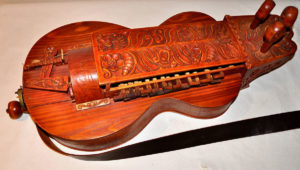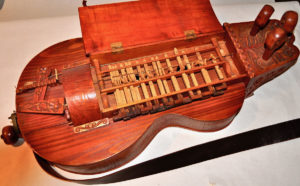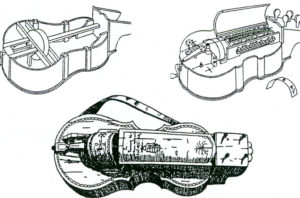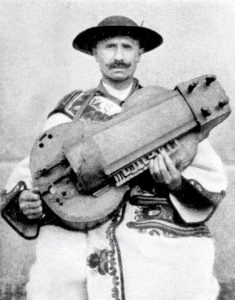HURDY-GURDY, REVOLVING LUTE (tekerő)
It was developed in the 13th century and spread from Spain. In Hungary it is mentioned and illustrated in the kuruc era (17th century) for the first time. The resonance box has a string for the tune and two for accompaniment. The strings are sounded by rotating a resinated wooden disc. On the outside of the box a system of wooden keys serve to communicate stoppings, which were completed with a chromatic row of keys. These keys are used to depress the melodic string. The hurdy-gurdy is still played in dances along with melodic instruments (violin, clarinet) in the Szentes and Csongrád regions.






